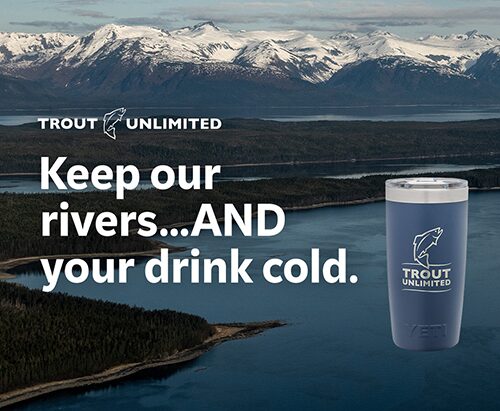Abandoned mines are a problem – a big problem. Today, there are some 500,000 abandoned mines across America. Many of these chronically leak heavy metals and other toxic residues into streams and groundwater. In the western U.S., 33,000 abandoned mine sites have degraded the environment, including popular trout streams such as the Animas River in Colorado, the Clark Fork in Montana and Utah’s American Fork Creek. In the East, 13,000 miles of streams are impacted by abandoned coal mines in the Appalachian region. State and federal governments have spent billions to clean up leaking abandoned mines, yet thousands more problematic mines have yet to be treated or require more reclamation. TU continues to play a leadership role nationwide in tackling this problem. With critical support from state, federal, and private partners — including the Tiffany & Co. Foundation, Freeport McMoRan, Inc., and Newmont Mining Corporation — we have made giant strides to date and are committed to protecting trout streams from impacts associated with abandoned mines and to restoring streams that have been degraded — one mine at a time.
The Kettle Creek watershed, in north-central Pennsylvania, provides habitat for native brook trout as well as classic fishing opportunities. However, the lower watershed has been plagued by abandoned coal mine drainage. For the past two decades, Trout Unlimited has partnered with the local Kettle Creek Watershed Association, state and federal agencies, and other stakeholders to develop and implement a comprehensive strategy for halting and repairing the impacts associated with these old mines. Today, nine passive treatment systems here are successfully treating severely polluted mine drainage, and over six miles of stream have been reconnected and restored, enabling the re-population of these waters by native brookies.
Since 2006, Trout Unlimited has restored almost 200 miles of stream degraded by abandoned mines in six western states. Our model is to implement high priority, watershed-scale mine restoration projects in river systems that are important for trout, salmon and steelhead. At the same time, we aim to organize and strengthen the capacity of local stakeholder groups to sustain these conservation efforts over the long term.
Our abandoned mine restoration work yields big results. For example, in Montana’s Ninemile Valley — a river network degraded by dredge mining — Trout Unlimited reconnected six different tributaries and restored two miles of mainstem habitat for native and wild trout.
After completion of the Ninemile Creek project, TU documented water savings of more than one acre-foot per day per restored mile of stream. This water is now stored in the newly reconstructed floodplain during high flows and released back to the stream when base flows decline
during the dry season, thereby increasing both flood and drought resiliency for the watershed and downstream communities.
Conservation groups like Trout Unlimited, with a keen interest in restoring and repairing the damage to lands and waters caused by abandoned mines, need help from Congress to enable us to scale up our mine reclamation efforts. Presently, “Good Samaritans,” who have no ownership of abandoned mines but who want to get involved with their cleanup, are limited under federal law by serious assumption-of-liability concerns. TU has helped develop Good Samaritan legislation that will provide the legal protections TU and other Good Samaritans require to increase our mine reclamation efforts while holding such parties accountable for the conditions of their project permits.


